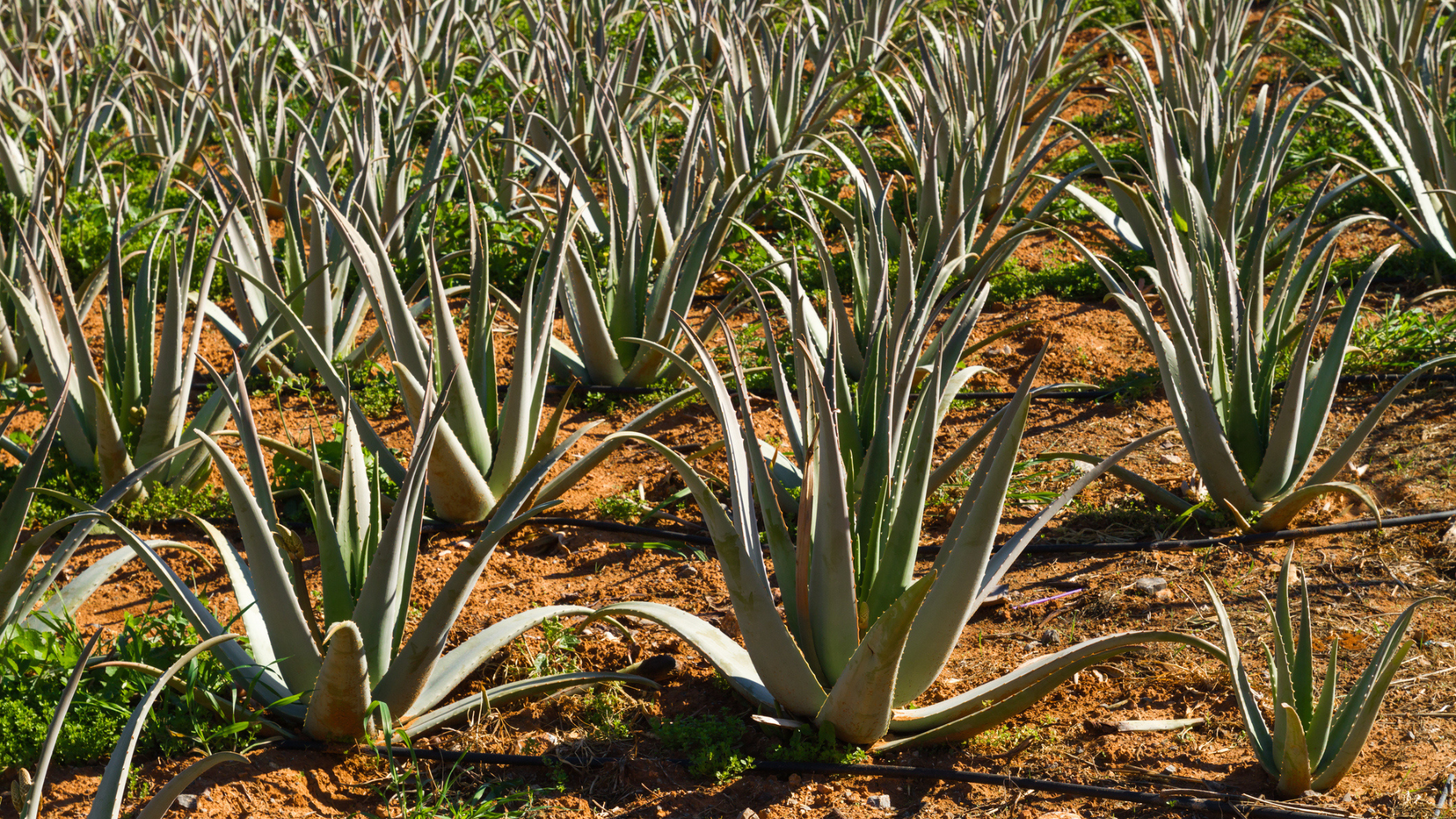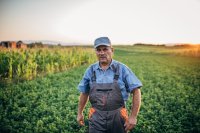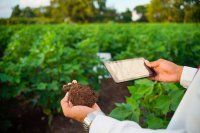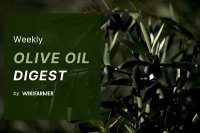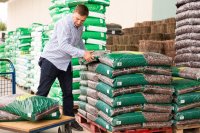Aloe vera is a resilient crop adaptable to a wide range of conditions, making it ideal for both large-scale and small-scale farming ventures. Its successful cultivation depends largely on understanding its planting requirements, soil preferences, and proper land preparation.
Aloe Soil Requirements
Aloe can grow in a wide variety of soils, from sandy coastal regions to loamy plains. The plant’s shallow root system makes it adaptable to soils with poor fertility, and it can tolerate pH levels as high as 8.5. The best results are achieved in well-drained loamy or sandy-loam soils, with pH values between 7.0 and 8.5. Soil with medium fertility, such as the black cotton soils (known for their deep, black, calcareous texture that ranges from clay loam to clay) of central India, enhances growth rates. Aloe vera cannot withstand waterlogged conditions, so well-drained soil is crucial to prevent root rot and other water-related issues.
While Aloe vera can tolerate alkaline soils with high sodium and potassium salt concentrations, it performs best in moderately fertile soils. The ideal texture is sandy, which allows adequate root aeration and prevents excessive moisture accumulation. Aloe can also adapt to marginal and sub-marginal soils, making it suitable for cultivation in areas with low fertility, provided the soil is well-drained and not prone to waterlogging. Some species even thrive on rocky or degraded lands, where they contribute to protect soil from erosion.
Soil Preparation
Proper land preparation is essential to ensure Aloe plants have the best root development conditions and nutrient uptake conditions. Given the shallow root system of Aloe vera, which typically does not extend deeper than 7.87 to 11.81 inches (20-30 cm), the soil should not be disturbed too deeply during preparation. Depending on the soil type, the land should be plowed once or twice, followed by leveling to ensure an even planting surface. At the time of the last plowing, 8921 to 13882 lbs/ac (or 10-15 tons/ha) of farmyard manure should be mixed into the soil to enhance organic matter and nutrient content.
For optimal results, fields should be divided into manageable plots, generally measuring around 32.80-49.21ft or 10-15m long and 9.84ft or 3m wide, to accommodate irrigation systems and ensure water is delivered evenly across the field. Depending on the slope and soil drainage characteristics, raised beds or furrows could be formed. Special attention must be given to avoid water stagnation (waterlogging), which can severely affect Aloe's growth.
After land preparation, suckers are planted in shallow pits, typically around 6 inches or 15 cm deep. These pits are made just before planting to preserve soil moisture and structure. Once the suckers are planted, the soil around the base should be pressed firmly to prevent lodging of the young plants, ensuring they are well-established before any adverse weather conditions such as wind or heavy rain.
Aloe Planting Overview
Aloe vera is typically propagated through root suckers or rhizome cuttings, with suckers of about 6-7 inches (15-18 cm) in length being planted at a depth where at least two-thirds of the portion is under the ground. The best planting season is during mid-spring to early autumn (April to September for the north hemisphere), which ensures optimal field survival due to increased soil moisture.
Aloe vera is typically propagated through suckers rather than seeds, making the "seed rate" equivalent to the number of suckers required for planting. The amount of suckers needed varies depending on the planting density and the spacing used.
For commercial cultivation, about 8,906 to 14,980 per acre or 22,000 to 37,000 suckers are required per hectare, with an average spacing of 23.62 x 23. 62 inches (or 60 x 60 cm) between plants. In more intensive cultivation setups, where higher leaf yield is desired, spacing can be adjusted to 23.62 x 11.81 inches (60 x 30 cm), which increases the number of suckers required to approximately 22672/ac or 56,000/hectare. This high-density planting maximizes land use in the first year, especially with intercropping techniques. However, as Aloe vera plants grow and expand their foliage, precise spacing becomes critical to avoid overcrowding and ensure that each plant has sufficient access to nutrients, sunlight, and moisture.
The land should be irrigated immediately after planting to promote the establishment, but once the plants are settled, Aloe requires minimal water and thrives in semi-arid and arid conditions.
Soilless Cultivation of Aloe Vera
In addition to traditional soil-based cultivation, Aloe vera can also be grown successfully using soilless cultivation techniques, such as in containers or hydroponic systems. These methods allow for better control over plant nutrition, water supply, and growth conditions, making them ideal for commercial cultivation in regions with poor soil quality or limited arable land.
Container Cultivation
Container cultivation is a popular soilless method for Aloe vera, especially in regions like central and southern Europe. In this system, suckers are first transplanted into smaller pots of around 2.5–3.5 liters in volume and then repotted into larger containers, typically 24 liters, after 6–9 months.
The key to success in container cultivation lies in the substrate, which is a mixture of peat and other mineral components, such as sand, pumice, or perlite, in equal parts (1:1 ratio). Peat, though effective, is increasingly being replaced by alternative organic materials, such as compost made from green waste, due to its environmental impact and high cost. Studies have shown that replacing peat with green compost yields excellent results, with increased plant height, leaf number, and overall biomass, while keeping the plants disease-free.
Hydroponic Cultivation
Hydroponics, the practice of growing plants without soil by using nutrient-rich water solutions, has been successfully applied to Aloe vera cultivation. The main challenge in hydroponic systems is finding the optimal nutrient solution that maximizes yield and quality. For Aloe vera, a nutrient solution containing 9.7 meq/L of nitrate (NO3) and 5.8 meq/L of potassium (K) has been shown to produce the best vegetative growth without compromising the plant's qualitative characteristics, such as aloin content and antioxidant activity.
Intercropping with Aloe Vera: Optimizing Land Use
During the first year of Aloe vera cultivation, a significant portion of the land remains unutilized—more than 40% of the space between the plants can be effectively used for intercropping. This practice not only optimizes land usage but also provides an opportunity for farmers to generate additional income while improving soil health.
In the initial year, leguminous or less competitive crops can be successfully grown between the Aloe plants. These intercrops are particularly well-suited for arid and semi-arid conditions, where water and nutrients are limited. Some of the crops that can be intercropped with Aloe during the first year include:
- Cluster bean
- Groundnut
- Sesame
- Isabgol
- Coriander
- Cumin
These crops are chosen for their compatibility with Aloe, as they do not compete aggressively for nutrients or space. Many of them, such as legumes, also improve soil fertility by fixing nitrogen, which benefits the Aloe plants.
Benefits of Intercropping in the First Year
- Enhanced Land Utilization: By growing intercrops in the spaces between Aloe rows, farmers can fully utilize their land, ensuring no area is left idle.
- Soil Health Improvement: Leguminous intercrops enrich the soil by fixing atmospheric nitrogen, reducing the need for synthetic fertilizers.
- Additional Income: Cultivating high-value intercrops like cumin or sesame can provide farmers with an extra source of income during the initial year before Aloe reaches maturity.
Intercropping Limitations in Subsequent Years
From the second year onwards, intercropping is discouraged. As the Aloe plants grow and their foliage expands, the available space decreases, and competition for nutrients, sunlight, and water intensifies. Continued intercropping beyond the first year may adversely affect the foliage yield and the quality of the Aloe vera produce. Therefore, after the first year, Aloe plants should be left to grow without the interference of other crops to ensure optimal productivity and leaf quality.
Conclusion
Aloe vera cultivation offers a promising agricultural opportunity, especially in poor soils or low rainfall. Its minimal water requirements, tolerance for various soils, and ability to thrive under harsh conditions make it an ideal crop for semi-arid and arid regions. By ensuring proper soil preparation, appropriate planting practices, and the right balance of organic fertilizers, Aloe vera can be a highly productive and economically viable crop for farmers.
References
- Medi, D., Turan, N., & Issa, K. (2015). Evaluation of Aloe vera intercropping on quantitative and qualitative characteristics of Roselle. Bulg. J. Agric. Sci, 21, 779-783.
- Cristiano, G., Murillo-Amador, B., & De Lucia, B. (2016). Propagation techniques and agronomic requirements for the cultivation of Barbados aloe (Aloe vera (L.) Burm. F.)—a review. Frontiers in plant science, 7, 1410.
- https://www.moice.gov.bt/wp-content/uploads/2020/07/ALOE-VERA-CULTIVATION.pdf
- https://www.frontiersin.org/journals/plant-science/articles/10.3389/fpls.2016.01410/full
- https://nopr.niscpr.res.in/bitstream/123456789/9406/1/NPR%203(2)%2085-87.pdf
Learn more about Aloe cultivation
Aloe Plant Information and Variety Selection
Aloe Vera Uses and Health Benefits
Growing Aloe in Your Backyard
Aloe Water Requirements and Irrigation Systems
Aloe Nutrient Needs & Fertilizer Requirements
Aloe Yield, Harvest, Storage, and Post-Harvest Processing
Aloe Common Pests, Diseases, and Weed Control

